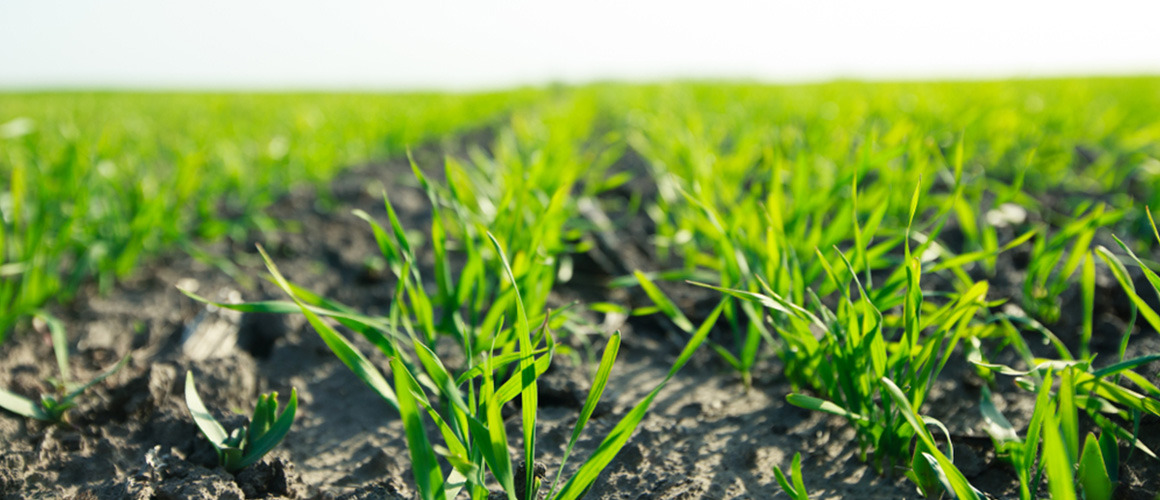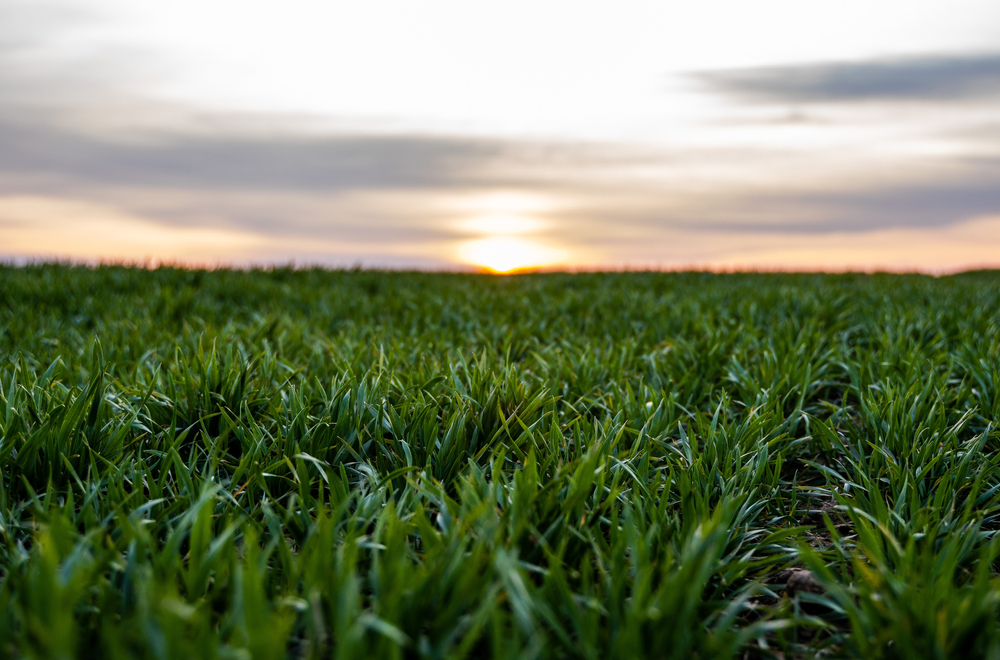
According to its nutritional value, barley plays an important role in ensuring the dynamic development of cattle breeding in the republic and its solid fodder base. 95,8-98,8% of barley grain produced in the country have been used as fodder for cattle breeding.
 Share
Share Along with various organic proteins in barley grain, lysine, tryptophan, leucine and other valuable amino acids in their composition are an integral part of the proteins of animal origin, which are of great importance in animal fattening. Chaff is the most important raw material in the preparation of hay flour. Its nutritional value is close to the fodder unit. It has a relatively short vegetation period compared to other autumn cereals (wheat, triticale, oats), which distinguishes it from other cereals. Barley varieties ripen at least 10-12 days sooner than wheat, and even fast-growing barley varieties ripen 12-15 days sooner, which allows to get a second crop (silo and grain corn, vegetable plants, etc.) from that field.
 Cultivation technologyProper adherence to the cultivation technology of cereals is of great importance in increasing their productivity. Proper selection of forecrops, proper preparation of soil, use of quality seeds of high-yielding varieties, proper preparation of food regime, chemical control of weeds, etc. play an important role in these factors. ForecropIn the early stages of its development, barley has the ability to absorb large amounts of nutrients. The productivity of barley is high in high agricultural background and soils with high humus content. In addition, its forecrop is also of great importance in ensuring the normal development of the plant. Studies show that the best forecrop for barley is corn for siloç potato, and cereals and legumes. It is a clean and herbaceous fallow for dry farming land conditions.Soil preparationSoil preparation is of great important in obtaining normal yields and increasing productivity after sowing. After harvesting, the field must be ploughed (also called summer ploughing) immediately after it is cleared of chaff and other trashes. The depth of ploughing must be 27-30 cm. Before preparing the soil for sowing, if weeds have been formed in the field, it is necessary to disc or cultivate the field to destroy the weeds. Before sowing, the field is ploughed with a heavy trowel. Particular attention is paid to the flatness of the surface of the field, otherwise the seeds that fall deeper will not be able to germinate and reach the surface of the soil, and there is rarity in the field.In the case of black fallow, which is kept for dry farming land areas, the field is usually covered after the forecrop is harvested. If ploughing is carried out immediately after harvesting, there is no need to cover. Summer maintenance works are of great importance for fallow land. The agro-technical measures carried out not only destroy the weeds, but also allow more moisture to accumulate on the top of the soil. Therefore, in the fields with black fallow, cultivation is carried out in early spring at a depth of 10-12 cm. If the last cultivation works are carried out 5-6 weeks prior sowing, then zigzag trowel is applied to the sowing field. The size of 80-90% of clots must not exceed 1-5 cm.
Cultivation technologyProper adherence to the cultivation technology of cereals is of great importance in increasing their productivity. Proper selection of forecrops, proper preparation of soil, use of quality seeds of high-yielding varieties, proper preparation of food regime, chemical control of weeds, etc. play an important role in these factors. ForecropIn the early stages of its development, barley has the ability to absorb large amounts of nutrients. The productivity of barley is high in high agricultural background and soils with high humus content. In addition, its forecrop is also of great importance in ensuring the normal development of the plant. Studies show that the best forecrop for barley is corn for siloç potato, and cereals and legumes. It is a clean and herbaceous fallow for dry farming land conditions.Soil preparationSoil preparation is of great important in obtaining normal yields and increasing productivity after sowing. After harvesting, the field must be ploughed (also called summer ploughing) immediately after it is cleared of chaff and other trashes. The depth of ploughing must be 27-30 cm. Before preparing the soil for sowing, if weeds have been formed in the field, it is necessary to disc or cultivate the field to destroy the weeds. Before sowing, the field is ploughed with a heavy trowel. Particular attention is paid to the flatness of the surface of the field, otherwise the seeds that fall deeper will not be able to germinate and reach the surface of the soil, and there is rarity in the field.In the case of black fallow, which is kept for dry farming land areas, the field is usually covered after the forecrop is harvested. If ploughing is carried out immediately after harvesting, there is no need to cover. Summer maintenance works are of great importance for fallow land. The agro-technical measures carried out not only destroy the weeds, but also allow more moisture to accumulate on the top of the soil. Therefore, in the fields with black fallow, cultivation is carried out in early spring at a depth of 10-12 cm. If the last cultivation works are carried out 5-6 weeks prior sowing, then zigzag trowel is applied to the sowing field. The size of 80-90% of clots must not exceed 1-5 cm.

Food regimeBarley is very demanding on organic and mineral nutrition. If the forecrop is provided with a high dose of organic fertilizer, then barley can be fed from the unused part of that fertilizer. If the forecrop is not sufficiently supplied with nutrients, then that field must be fertilized under ploughing.To obtain a high grain from barley, N90 P90 K60 kg is taken as the active ingredient. Phosphorus and potassium fertilizers are applied under ploughing or during sowing, and nitrogen fertilizers are given as feed. 10-20% of nitrogen fertilizer can be applied before sowing.It is more expedient to cultivate it in soils rich in fast-dissolving nutrients, with medium mechanical composition, normal acidity (pH = 6.0 -7,5). Poorly structured heavy sour sandy soils exposed to salinization, with groundwater on the surface, are not suitable for barley cultivation. The amount of humus in the soil in which it is cultivated must be at least 1,8%, and exchangeable phosphorus and potassium - at least 150 mg/kg.
Care for sowing and planting Certified (R1-3) reproduction seeds with 92% laboratory germination and 98% purity must be used in barley plantings. Prior to sowing, the seeds are treated for various diseases. If the seeds are not treated, it is impossible to avoid from smut, netlike staining, helminthosporiosis, fusariose and etc. diseases.Sowing must be carried out at an optimal time, in the early sowing, growth happens quickly in the plants, and they are destroyed in the winter. Therefore, sowing must be carried out at a time when 4-5 stems can be formed on the plants. For the plains and irrigated regions of the republic, the second decade of October - the first decade of November, and for mountainous and foothill areas - the second decade of September - the first decade of October. Sowing is carried out in a row method. The sowing rate is 3,0-3,5 million plants per hectare. Under dry farming land conditions, this norm can be taken 3,5-4,0 mln. In the soils with normal mechanical composition, the depth of seeds in irrigation must be 4-5 cm, in dry farming lands - 6-8 cm, and in soils with heavy mechanical composition - 3-4 cm.Planting care begins after receiving the output and continues during the whole vegetation period. Pests and diseases are controlled, feeding fertilizers are given, weeds are controlled, and etc. Spray with fungicides in case of powdery mildew, rust, helminthosporiose and black bacteriosis diseases are found, and with one of the herbicides against dicotyledonous weeds in case of weeding is observed.
Certified (R1-3) reproduction seeds with 92% laboratory germination and 98% purity must be used in barley plantings. Prior to sowing, the seeds are treated for various diseases. If the seeds are not treated, it is impossible to avoid from smut, netlike staining, helminthosporiosis, fusariose and etc. diseases.Sowing must be carried out at an optimal time, in the early sowing, growth happens quickly in the plants, and they are destroyed in the winter. Therefore, sowing must be carried out at a time when 4-5 stems can be formed on the plants. For the plains and irrigated regions of the republic, the second decade of October - the first decade of November, and for mountainous and foothill areas - the second decade of September - the first decade of October. Sowing is carried out in a row method. The sowing rate is 3,0-3,5 million plants per hectare. Under dry farming land conditions, this norm can be taken 3,5-4,0 mln. In the soils with normal mechanical composition, the depth of seeds in irrigation must be 4-5 cm, in dry farming lands - 6-8 cm, and in soils with heavy mechanical composition - 3-4 cm.Planting care begins after receiving the output and continues during the whole vegetation period. Pests and diseases are controlled, feeding fertilizers are given, weeds are controlled, and etc. Spray with fungicides in case of powdery mildew, rust, helminthosporiose and black bacteriosis diseases are found, and with one of the herbicides against dicotyledonous weeds in case of weeding is observed.
Crop harvestingBarley is harvested directly with a combine during the full ripening phase. When harvesting, the moisture content of the grain must not exceed 16-17%. Otherwise, at high humidity, the newly harvested product becomes hot, the germination capacity of the grain decreases and its technological quality deteriorates. Very delayed harvesting after full ripening leads to a decrease of several centners of productivity per hectare, depending on the variety.